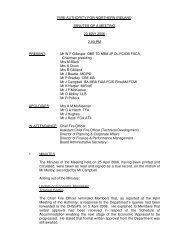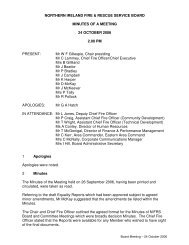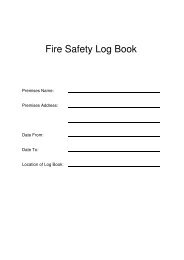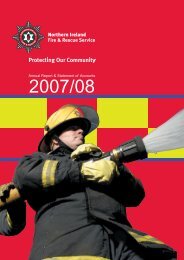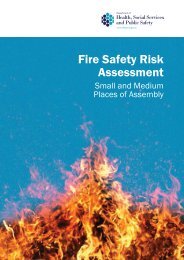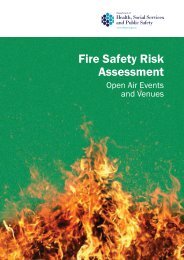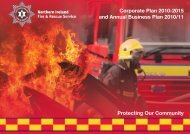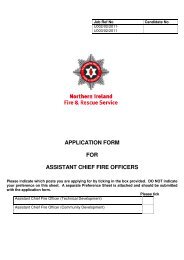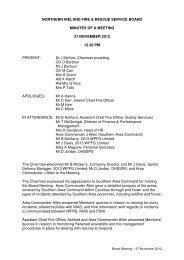A Guide To Reducing The Number Of False alarms From fire
A Guide To Reducing The Number Of False alarms From fire
A Guide To Reducing The Number Of False alarms From fire
You also want an ePaper? Increase the reach of your titles
YUMPU automatically turns print PDFs into web optimized ePapers that Google loves.
• Unsecured control panels being activated, usually as a result of thepanel’s key or a similar device being left in the panel.<strong>The</strong>se incidents can usually be tackled by changing working practices (forexample, issuing permits to work) or giving information and training tostaff and contractors responsible for buildings.Activities near detectorsMany false <strong>alarms</strong> result from activities carried out near <strong>fire</strong> detectors,particularly smoke detectors. A common example is burning toast in atoaster. More examples are given on pages 7 and 8. This type of alarmcan be tackled by carrying out the activity elsewhere, fitting a temporarycover on a detector while the activity is being carried out, changing thetype of detector or moving it, or changing the way the <strong>fire</strong>-alarm systemresponds when a detector is triggered. If you use temporary covers ondetectors, these should be fitted only by approved staff and removedcarefully as soon as possible after the activity has ended. You can getmore advice from the company that installed or maintains the system.You should consider all the activities thatgo on in your building and develop aplan to avoid false <strong>alarms</strong>. Make sureyou have proper arrangements in placefor training staff on work processes andpractices, the <strong>fire</strong> precautions you have,and how work processes and practicesmay affect the <strong>fire</strong>-alarm system if theyare not carried out properly.12




